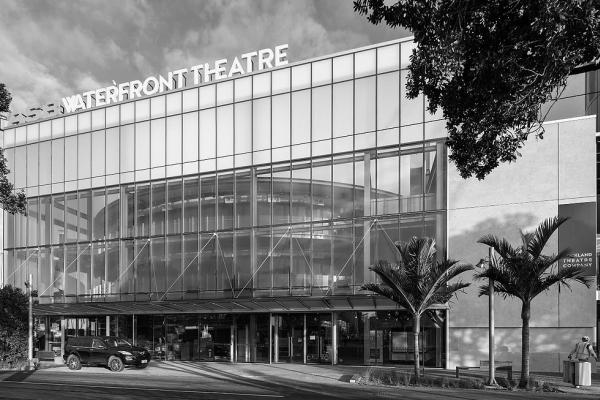Published on the 19/10/2016 | Written by Hayden McCall

Architectural design and building software disciplines play nice in construction…
The recently unveiled ASB Waterfront Theatre on Auckland’s Wynyard Quarter represents a breakthrough in design smarts.
The theatre is a unique story of ‘customer-experience’ centric design and dramatic architecture around the very specific set of functional requirements that modern theatre demands.
Its construction brought together design from Moller Architects, the principal of which and veritable doyen of the profession Gordon Moller played a pivotal, if dual, role (Moller is also Chairman of the Auckland Theatre Company – “I made sure I told everyone,” he quipped).
Computer Aided Design (CAD) has been around for eons, but historically has sat on the fringe while real architects produced their traditional conceptual sketches and hand-crafted blueprints.
“Sure, architects used it, and invested in the software as it matured, but it was always one of those ‘yes we’re doing it, but we’re not entirely sure why’ technologies,” said David Wilkie, director of Xigo, a specialist construction project management firm. While Wilkie wasn’t involved with the waterfront project, his business is all about managing the linkages between architects and construction firms. He said projects are increasingly benefiting from the end-to-end use of technology.
“I’m of the old school,” said Moller speaking at a theatre tour for a group of exhibitors and sponsors for the upcoming Facilities Integrate event in Auckland, “So I design by hand, my concepts are embellished in watercolour and I find my thinking is freed when I have a pencil in my fingers.”
But when it came to answering questions on the use of the building design technology, or in more contemporary terms, Building Information Modelling (BIM) systems, his response was surprising for an old-schooler. “The technology [his firm uses a product called Revit] has come a long way – it really now is part and parcel of what we do. While the initial designs and concepts might still start in pencil sketches, once the key decision-making is complete, the technology kicks in.”
His team, albeit a generation or two behind Moller, use the BIM tools intensively, spitting out every manner of conceptual imagery from any angle, cost estimates for various build scenarios right down to data cabling and drainage drawings. “It really leaves very little to chance – project managers, builders and tradesmen all sing from the same song sheet, and the small decisions that historically chewed up time in their resolution are already made for them. They just get on with doing what they do best.”
Wilkie agreed. “It has changed quite rapidly as both the technology itself and, equally, the acceptance of the technology have both matured and evolved.” He refers to a hotel currently in the planning phase that is a completely prefabricated modular building solution. And not of the Christchurch quick-fix-to-a-problem variety. “This is a top class facility with all the bells and whistles, high-end finishing and furnishing. The entire thing down to the dishwasher and pillows is delivered as a virtual kitset.”
In the residential sector, disruptive changes are also emerging, helped by the use of BIM technology. ‘Box’ is a relative new boy on the block, with an objective of tipping the costly and unwieldy ‘architecturally-designed’ building model on its head. CEO Dan Heyworth said: “There are exciting changes afoot in the design and construction industry with new technologies and materials.
“The traditional way of designing and building is changing fast and we see more multi-disciplinary companies of architects, builders, technologists, estimators, engineers, and marketers doing things smarter, faster & cheaper,” Heyworth added.
Given the staggering house price inflation in every major city in the world, the issue, it would seem, is not the technology, but getting the right tradesman to turn up to do the right job at the right time.
That, from personal experience, is still going to take the human touch to get right.



























